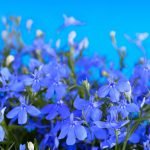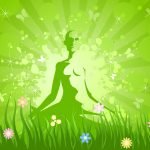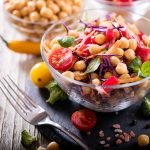Battling the “Blahs”: Supporting Mood, Energy, & Sleep with Natural Therapies
Tolle Totum
Erica Zelfand, ND
Within the context of our fast-paced society and the high levels of chronic stress it confers, fatigue, malaise, anxiety, depression, and poor sleep are commonplace. These proverbial birds of a feather flock together, making it difficult for us as clinicians to isolate – let alone treat – just one.
Thankfully, our system of medicine neither expects us to fixate upon a single variable nor accommodate our sometimes-myopic attempts to treat patients through a single active constituent, pathway, or mechanism of action. On the contrary, many of the natural therapies targeted at energy production and nervous system support confer a wide range of biological activity.
Vitamin D3
Vitamin D receptors have been identified in at least 36 different tissues of the human body, including numerous regions of the brain.1,2 Many mechanisms for vitamin D’s influence on mood have been proposed, including its role in the synthesis of the neurotransmitters serotonin (thus affecting mood, memory, and learning) and dopamine (thus supporting motivation, thinking, and concentration).3-6 The vitamin-hormone has also been shown to affect circadian rhythms,7 thereby influencing melatonin and cortisol levels,8-10 as well as the thyroid and adrenal glands.11
It is perhaps unsurprising that supplementing with vitamin D3 (the active form of the nutrient) has been shown to help specifically with depression and, more generally, with psychiatric health.12,13
Amino Acids
GABA
An appropriate balance of neuronal excitation and inhibition is necessary for sleep, mood, memory, and cognition. The see-saw relationship of the excitatory neurotransmitter glutamate and the calming amino acid gamma-aminobutyric acid (GABA) thus plays an important role in brain health.14 Lower GABA concentrations have been associated with poor sleep quality,15 depression, and anxiety,16-18 whereas GABA supplementation has been shown to induce relaxation, mitigate anxiety,19 and reduce the fear response.20
Pharmaceutical insomnia medications (like zolpidem and eszopiclone) and prescription anxiolytics induce sedation by means of GABA agonism.21-24 Yet GABA has also been shown to increase the alpha brain-wave patterns associated with relaxation states, such as those seen in mindfulness meditation.25,26
L-Theanine
Derived from green tea, L-theanine has also demonstrated efficacy in balancing excessively excitatory states, supporting relaxation, increasing alpha-wave activity,27 and blocking the activation of glutamate receptors.27,28 The amino acid has also been shown to significantly increase the levels of serotonin, dopamine, and GABA in the brain.29,30
In clinical trials, L-theanine has demonstrated calming effects in situations of acute stress, reducing the anxiety-related parameters of heart rate and blood pressure31,32 and improving the immune response.33 Animal and cellular studies show L-theanine supports the nervous system by protecting against catecholamine toxicity and enhancing glutathione production and recycling34,35 – 2 mechanisms that may contribute to the improved cognitive function seen with L-theanine supplementation in elderly persons.36 L-theanine has also been shown to objectively reduce salivary α-amylase levels (a marker of sympathetic nervous system activity) during academic challenge.37
Adaptogens
When it comes to mood support, adaptogenic herbs work largely vis-à-vis the hypothalamic-pituitary-adrenal (HPA) axis.38 Although we tend to think of this pathway as primarily mitigating adrenal production of cortisol, the adaptogens also affect cytokine signaling, catecholamine production, and the oxidative stress response – factors that also have significant effects on mood.39
Rhodiola
The impact of Rhodiola rosea (rhodiola) on depression likely comes from its effects on neurotransmitters – serotonin, in particular.40-43 Caution should therefore be used in those taking medications that affect serotonin and its receptor activity.43
Numerous clinical trials have demonstrated rhodiola’s positive impact on mental health,44 and its effects in combating both stress-related fatigue and chronic fatigue are well known.45,46 A dose of 200 mg of rhodiola taken twice daily was shown to significantly reduce self-reported anxiety, stress, anger, confusion, and depression compared to placebo after 2 weeks’ supplementation in mildly anxious individuals.47 Similar findings were observed in a pilot study of those with generalized anxiety disorder, where 340 mg of rhodiola taken daily for 10 weeks yielded significant decreases in mean Hamilton Anxiety Rating Scale scores.48
Rhodiola has also shown promise in the context of mild-to-moderate depression, outperforming placebo and offering a considerably gentler side-effect profile compared to the SSRI sertraline – which was, admittedly, slightly more effective than rhodiola in the trial.49
Holy Basil
Widely used and well tolerated per a survey of 24 independent clinical studies including over 1000 participants,50 the Ayurvedic herb Ocimum sanctum (holy basil) serves as a perfect example of how ancient remedies can help with modern ailments.
Also known as tulsi, the herb largely supports energy and mood through balancing the feedback systems of the HPA axis.51 Holy basil has also been shown to normalize the levels of neurotransmitters and their degrading enzymes,52 as well as to prevent corticosterone elevations in situations of stress.53
In animal models, holy basil has been shown to ease the symptoms of both depression and anxiety54,55 with effects comparable to pharmaceutical antidepressants.56 In humans studies, holy basil reduced symptoms associated with generalized anxiety disorder.57 In a 6-week randomized, double-blind, placebo-controlled (RDBPC) study, holy basil not only significantly improved general stress scores, but also helped with sexual problems, sleep trouble, forgetfulness, and energy.58 It is likely for these reasons that holy basil is sometimes called “liquid yoga.”59
Ashwagandha
A discussion of adaptogenic herbs would perhaps be incomplete without mention of Withania somnifera (ashwagandha), which has been shown to support both brain and body in times of stress. In a RDBPC trial of adults experiencing chronic stress, supplementation with ashwagandha significantly reduced perceived stress levels, decreased food cravings, and improved subjective happiness scores, while also reducing objective markers like cortisol levels and weight.60
Ashwagandha has been shown in animal models to not only buffer the negative effects of sleep deprivation on cognitive function,61 but also to mitigate the associated inflammation, anxiety, and cellular injury and death.62 As energizing as the plant can be, however, the Latin name somnifera reflects ashwagandha’s ability to enhance sleep quality,63 largely due to its effects on the neurotransmitter GABA.64
Giving Thanks
Numerous studies have demonstrated the positive effects of keeping gratitude journals. Journaling 3 times weekly about positive experiences from the past day allows the brain to relive those positive experience and access gratitude.65-67
In a recent study, participants were asked to keep a gratitude journal and to once a week express their appreciation of another person to that person directly through a face-to-face conversation, note of thanks, e-mail, or social media post. These participants reported more balanced mood and fewer depressive symptoms than those who kept a gratitude log alone. These findings suggest that creating connection from a place of gratitude may combat depression more effectively than simply reflecting upon it silently.68
Conclusion
The systems of the body do no operate in a vacuum independent of the other functions happening within the organism. Like the body, naturopathic approaches to healing also defy linear efforts to isolate, reduce, or deconstruct healing, instead nourishing physiology through a myriad of pathways and a variety of constituents. Beyond the healthcare industry’s myopic preoccupation with serotonin receptor activity – or its focus on any single neurochemical pathway or endocrine “axis,” for that matter – is an approach to healing that is as multi-faceted, elegant, complex, and spirited as our patients.
References:
- DeLuca GC, Kimball SM, Kolasinski J, et al. Review: the role of vitamin D in nervous system health and disease. Neuropathol Appl Neurobiol. 2013;39(5):458-484.
- Eyles DW, Burne TH, McGrath JJ. Vitamin D, effects on brain development, adult brain function and the links between low levels of vitamin D and neuropsychiatric disease. Front Neuroendocrinol. 2013;34(1):47-64.
- Kerr DC, Zava DT, Piper WT, et al. Associations between vitamin D levels and depressive symptoms in healthy young adult women. Psychiatry Res. 2015;227(1):46-51.
- Anjum I, Jaffery SS, Fayyaz M, et al. The role of vitamin D in brain health: a mini literature review. Cureus. 2018;10(7):e2960.
- Anglin RE, Samaan Z, Walter SD, McDonald SD. Vitamin D deficiency and depression in adults: systematic review and meta-analysis. Br J Psychiatry. 2013;202:100-107.
- Patrick RP, Ames BN. Vitamin D hormone regulates serotonin synthesis. Part 1: relevance for autism. FASEB J. 2014;28(6):2398-2413.
- Kronfeld-Schor N, Einat H. Circadian rhythms and depression: human psychopathology and animal models. Neuropsychopharmacology. 2012;62(1):101-114.
- Vondrasová D, Hájek I, Illnerová H. Exposure to long summer days affects the human melatonin and cortisol rhythms. Brain Res. 1997;759(1):166-170.
- Gnocchi D, Bruscalupi G. Circadian rhythms and hormonal homeostasis: pathophysiological implications. Biology (Basel). 2017 Feb 4;6(1). pii: E10.
- Maripuu M, Wikgren M, Karling P, et al. Relative hypo- and hypercortisolism are both associated with depression and lower quality of life in bipolar disorder: a cross-sectional study. PLoS One. 2014;9(6):e98682.
- Ntyonga-Pono MP, et al. Chronic adrenal insufficiency: an underestimated cause of chronic fatigue. Pan Afr Med J. 2018;29:93. [Article in French]
- Gloth FM 3rd, Alam W, Hollis B. Vitamin D vs broad spectrum phototherapy in the treatment of seasonal affective disorder. J Nutr Health Aging. 1999;3(1):5-7.
- Humble MB. Vitamin D, light and mental health. J Photochem Photobiol B. 2010;101(2):142-149.
- Petroff OA. GABA and glutamate in the human brain. Neuroscientist. 2002;8(6):562-573.
- Gottesmann C. GABA mechanisms and sleep. Neuroscience. 2002;111(2):231-239.
- Pehrson AL, Sanchez C. Altered γ-aminobutyric acid neurotransmission in major depressive disorder: a critical review of the supporting evidence and the influence of serotonergic antidepressants. Drug Des Devel Ther. 2015;9:603-624.
- Meyerhoff DJ, Mon A, Metzler T, Neylan TC. Cortical gamma-aminobutyric acid and glutamate in posttraumatic stress disorder and their relationships to self-reported sleep quality. Sleep. 2014;37(5):893-900.
- Rosso IM, Weiner MR, Crowley DJ, et al. Insula and anterior cingulate GABA levels in posttraumatic stress disorder: preliminary findings using magnetic resonance spectroscopy. Depress Anxiety. 2014;31(2):115-123.
- Abdou AM, Higashiguchi S, Horie K, et al. Relaxation and immunity enhancement effects of gamma-aminobutyric acid (GABA) administration in humans. Biofactors. 2006;26(3):201-208.
- Etkin A, Wager TD. Functional neuroimaging of anxiety: a meta-analysis of emotional processing in PTSD, social anxiety disorder, and specific phobia. Am J Psychiatry. 2007;164(10):1476-1488.
- Zolpidem (Ambien). Epocrates. Available at: https://online.epocrates.com/drugs/38407/Ambien/Pharmacology. Accessed October 4, 2018.
- Eszopiclone (Lunesta). Epocrates. Available at: https://online.epocrates.com/drugs/4035/Lunesta. Accessed October 4, 2018.
- Borghese CM, Hicks JA, Lapid DJ, et al. GABA(A) receptor transmembrane amino acids are critical for alcohol action: disulfide cross-linking and alkyl methanethiosulfonate labeling reveal relative location of binding sites. J Neurochem. 2014;128(3):363-375.
- Alprazolam (Xanax). Epocrates. Available at: https://online.epocrates.com/drugs/1414/Xanax. Accessed October 4, 2018.
- Khare KC, Nigam SK. A study of electroencephalogram in meditators. Indian J Physiol Pharmacol. 2000;44(2):173-178.
- Yoto A, Murao S, Motoki M, et al. Oral intake of γ-aminobutyric acid affects mood and activities of central nervous system during stressed condition induced by mental tasks. Amino Acids. 2012;43(3):1331-1337.
- Nobre AC, Rao A, Owen GN. . L-theanine, a natural constituent in tea, and its effect on mental state. Asia Pac J Clin Nutr. 2008;17 Suppl 1:167-168.
- Kakuda T, Nozawa A, Sugimoto A, Niino H. Inhibition by theanine of binding of [3H]AMPA, [3H]kainate, and [3H]MDL 105,519 to glutamate receptors. Biosci Biotechnol Biochem. 2002;66(12):2683-2686.
- Yokogoshi H, Kobayashi M, Mochizuki M, Terashima T. Effect of theanine, r-glutamylethylamide, on brain monoamines and striatal dopamine release in conscious rats. Neurochem Res. 1998;23(5):667-673.
- Nathan PJ, Lu K, Gray M, Oliver C. The neuropharmacology of L-theanine (N-ethyl-L-glutamine): a possible neuroprotective and cognitive enhancing agent. J Herb Pharmacother. 2006;6(2):21-30.
- Lu K, Gray MA, Oliver C, et al. The acute effects of L-theanine in comparison with alprazolam on anticipatory anxiety in humans. Hum Psychopharmacol. 2004;19(7):457-465.
- Kimura K, Ozeki M, Juneja LR, Ohira H. L-Theanine reduces psychological and physiological stress responses. Biol Psychol. 2007;74(1):39-45.
- Yoto A, Motoki M, Murao S, Yokogoshi H. Effects of L-theanine or caffeine intake on changes in blood pressure under physical and psychological stresses. J Physiol Anthropol. 2012;31:28.
- Takeshima M, Miyazaki I, Murakami S, et al. l-Theanine protects against excess dopamine-induced neurotoxicity in the presence of astrocytes. J Clin Biochem Nutr. 2016;59(2):93-99.
- Tian X, Sun L, Gou L, et al. Protective effect of l-theanine on chronic restraint stress-induced cognitive impairments in mice. Brain Res. 2013;1503:24-32.
- Kakuda T. Neuroprotective effects of theanine and its preventive effects on cognitive dysfunction. Pharmacol Res. 2011;64(2):162-168.
- Unno K, Tanida N, Ishii N, et al. Anti-stress effect of theanine on students during pharmacy practice: Positive correlation among salivary α-amylase activity, trait anxiety and subjective stress. Pharmacol Biochem Behav. 2013;111:128-135.
- Pawar VS, Shivakumar H. A current status of adaptogens: natural remedy to stress. Asian Pac J Trop Dis. 2012;2(1):S480-S490.
- Panossian A, Wikman G, Wagner H. Plant adaptogens III: earlier and more recent aspects and concepts on their mode of action. Phytomedicine. 1999;6(4):287-300.
- van Diermen D, Marston A, Bravo J, et al. Monoamine oxidase inhibition by Rhodiola rosea L. roots. J Ethnopharmacol. 2009;122(2):397-401.
- Chan SW. Panax ginseng, Rhodiola rosea and Schisandra chinensis. Int J Food Sci Nutr. 2012;63 Suppl 1:75-81.
- Qureshi NA, Al-Bedah AM. Mood disorders and complementary and alternative medicine: a literature review. Neuropsychiatr Dis Treat. 2013;9:639-658.
- Maniscalco I, Toffol E, Giupponi G, Conca A. The interaction of Rhodiola rosea and antidepressants. A case report. Neuropsychiatr. 2015;29(1):36-38. [Article in German]
- Hung SK, Perry R, Ernst E. The effectiveness and efficacy of Rhodiola rosea L.: a systematic review of randomized clinical trials. Phytomedicine. 2011;18(4):235-244.
- Olsson EM, von Schéele B, Panossian AG. A randomised, double-blind, placebo-controlled, parallel-group study of the standardised extract SHR-5 of the roots of Rhodiola rosea in the treatment of subjects with stress-related fatigue. Planta Med. 2009;75(2):105-112.
- Lekomtseva Y, Zhukova I, Wacker A. Rhodiola rosea in subjects with prolonged or chronic fatigue symptoms: results of an open-label clinical trial. Complement Med Res. 2017;24(1):46-52.
- Cropley M, Banks AP, Boyle J. The Effects of Rhodiola rosea L. Extract on Anxiety, Stress, Cognition and Other Mood Symptoms. Phytother Res. 2015;29(12):1934-1939.
- Bystritsky A, Kerwin L, Feusner JD. A pilot study of Rhodiola rosea (Rhodax) for generalized anxiety disorder (GAD). J Altern Complement Med. 2008;14(2):175-180.
- Mao JJ, Xie SX, Zee J, et al. Rhodiola rosea versus sertraline for major depressive disorder: A randomized placebo-controlled trial. Phytomedicine. 2015;22(3):394-399.
- Jamshidi N, Cohen MM. The Clinical Efficacy and Safety of Tulsi in Humans: A Systematic Review of the Literature. Evid Based Complement Alternat Med. 2017;2017:9217567.
- Jothie Richard E, Illuri R, Bethapudi B, et al. Anti-stress activity of Ocimum sanctum: possible effects on hypothalamic-pituitary-adrenal axis. Phytother Res. 2016;30(5):805-814.
- Singh N, Misra N, Srivastava AK, et al. Effect of anti-stress plants on biochemical changes during stress reaction. Indian J Pharmacol. 1991;23(3):137-142.
- Sembulingam K, Sembulingam P, Namasivayam A. Effect of Ocimum sanctum Linn on noise induced changes in plasma corticosterone level. Indian J Physiol Pharmacol. 1997;41(2):139-143.
- Chatterjee M, Verma P, Maurya R, Palit G. Evaluation of ethanol leaf extract of Ocimum sanctum in experimental models of anxiety and depression. Pharm Biol. 2011;49(5):477-483.
- Tabassum I, Siddiqui ZN, Rizvi SJ. Effects of Ocimum sanctum and Camellia sinensis on stress-induced anxiety and depression in male albino Rattus norvegicus. Indian J Pharmacol. 2010;42(5):283-288.
- Khajuria DK. Comparative pharmacological evaluation of Ocimum sanctum and imipramine for antidepressant activity. Lat Am J Pharm. 2011;30(3):435-439.
- Bhattacharyya D, Sur TK, Jana U, Debnath PK. Controlled programmed trial of Ocimum sanctum leaf on generalized anxiety disorders. Nepal Med Coll J. 2008;10(3):176-179.
- Saxena RC, Singh R, Kumar P, et al. Efficacy of an extract of Ocimum tenuiflorum (OciBest) in the management of general stress: A double-blind, placebo-controlled study. Evid Based Complement Alternat Med. 2012;2012:894509.
- Cohen MM. Tulsi – Ocimum sanctum: a herb for all reasons. J Ayurveda Integr Med. 2014;5(4):251-259.
- Choudhary D, Bhattacharyya S, Joshi K. Body weight management in adults under chronic stress through treatment with Ashwagandha root extract: a double-blind, randomized, placebo-controlled trial. J Evid Based Complementary Altern Med. 2017;22(1):96-106.
- Manchanda S, Mishra R, Singh R, et al. Aqueous leaf extract of Withania somnifera as a potential neuroprotective agent in sleep-deprived rats: a mechanistic study. Mol Neurobiol. 2017;54(4):3050-3061.
- Kaur T, Singh H, Mishra R, et al. Withania somnifera as a potential anxiolytic and immunomodulatory agent in acute sleep deprived female Wistar rats. Mol Cell Biochem. 2017;427(1-2):91-101.
- Kaushik MK, Kaul SC, Wadhwa R, et al. Triethylene glycol, an active component of Ashwagandha (Withania somnifera) leaves, is responsible for sleep induction. PLoS One. 2017;12(2):e0172508.
- Candelario M, Cuellar E, Reyes-Ruiz JM, et al. Direct evidence for GABAergic activity of Withania somnifera on mammalian ionotropic GABAA and GABAρ receptors. J Ethnopharmacol. 2015;171:264-272.
- Davis DE, Choe E, Meyers J, et al. Thankful for the little things: A meta-analysis of gratitude interventions. J Couns Psychol. 2016;63(1):20-31.
- Emmons RA, McCullough ME. Counting blessings versus burdens: an experimental investigation of gratitude and subjective well-being in daily life. J Pers Soc Psychol. 2003;84(2):377-389.
- Bolier L, Haverman M, Westerhof GJ, et al. Positive psychology interventions: a meta-analysis of randomized controlled studies. BMC Public Health. 2013;13:119.
- O’Connell BH, O’Shea D, Gallagher S. Feeling thanks and saying thanks: a randomized controlled trial examining if and how socially oriented gratitude journals work. J Clin Psychol. 2017;73(10):1280-1300.
 Erica Zelfand, ND, is a family physician, medical writer, and teacher. She is deeply committed to a patient-centered, root-cause-oriented, nature-honoring approach to healing, with special interests in endocrinology and the mind/body connection. After graduating from the National University of Natural Medicine (NUNM) with high honors, she completed a family practice residency at her alma mater, followed by an additional 4 years of post-doctoral training in pediatrics. She is also adjunct faculty at NUNM, an engaging public speaker, and a mentor to numerous medical students. To learn more, visit www.EricaZelfand.com.
Erica Zelfand, ND, is a family physician, medical writer, and teacher. She is deeply committed to a patient-centered, root-cause-oriented, nature-honoring approach to healing, with special interests in endocrinology and the mind/body connection. After graduating from the National University of Natural Medicine (NUNM) with high honors, she completed a family practice residency at her alma mater, followed by an additional 4 years of post-doctoral training in pediatrics. She is also adjunct faculty at NUNM, an engaging public speaker, and a mentor to numerous medical students. To learn more, visit www.EricaZelfand.com.









